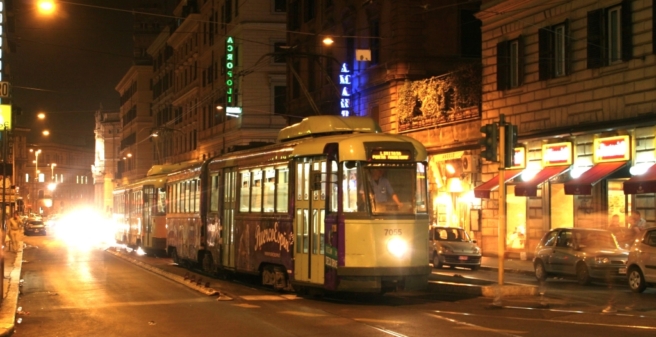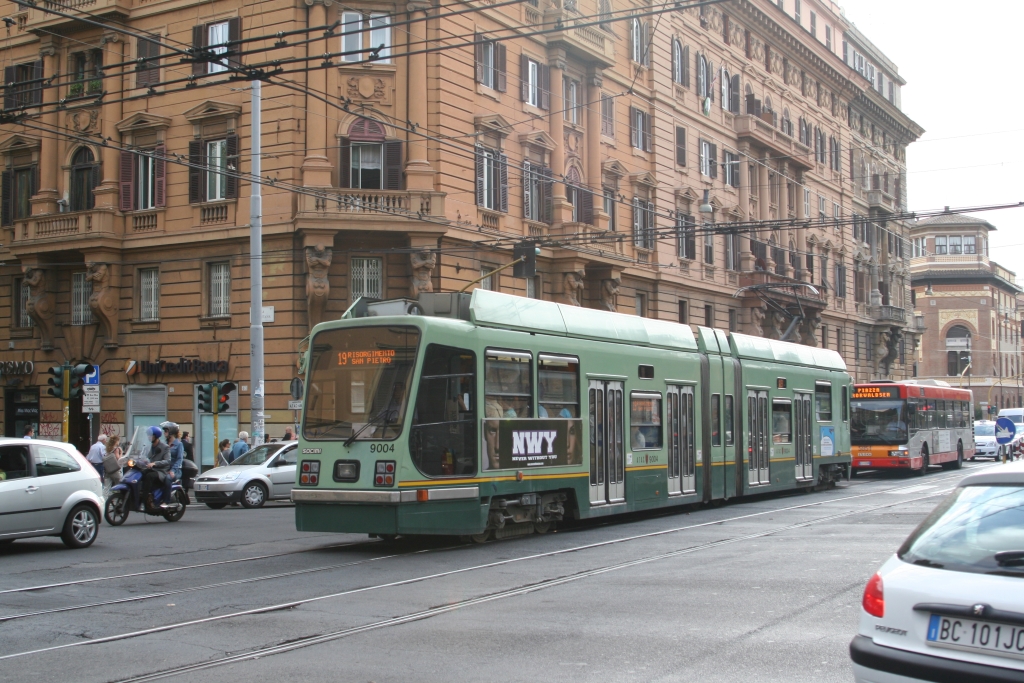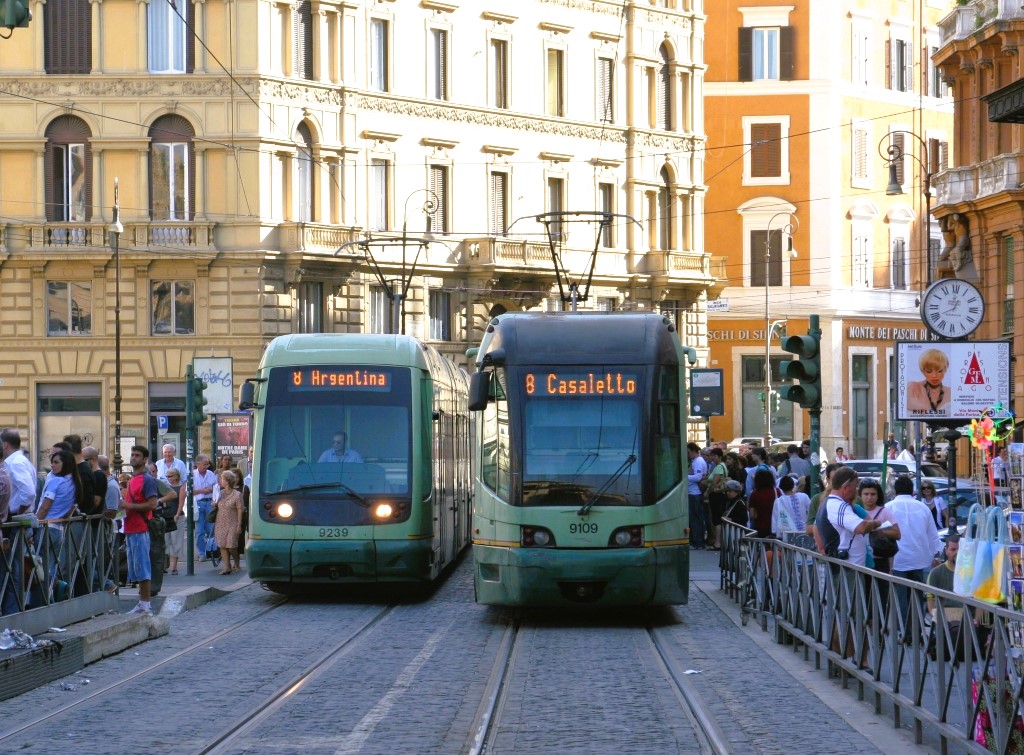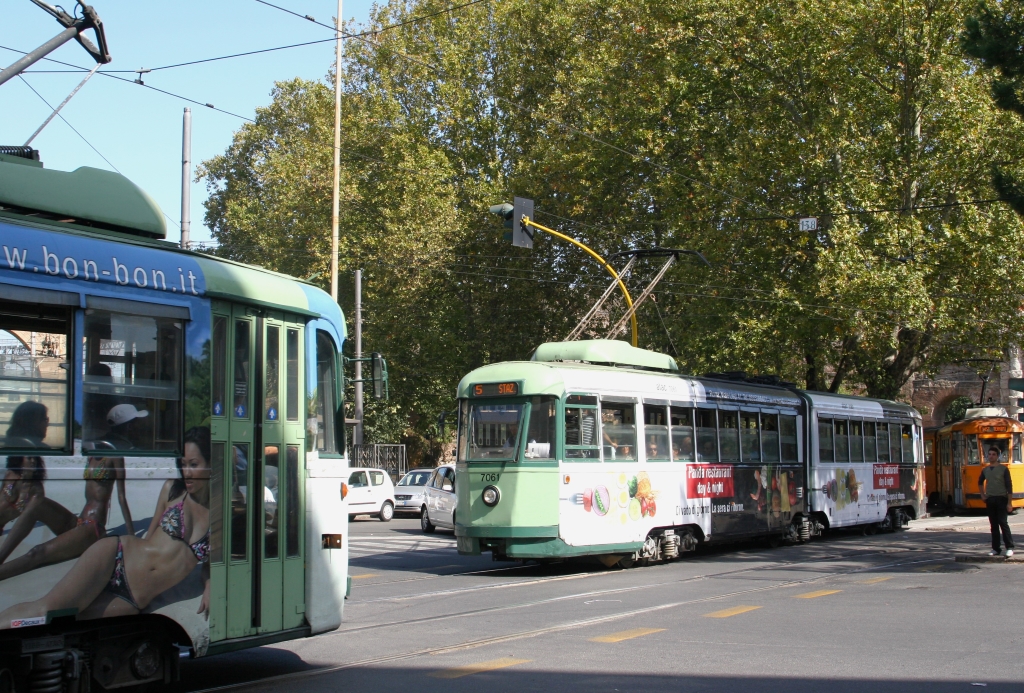
ATAC, the Italian capital’s public transportation authority, has awarded a contract for the supply of up to 121 bi-directional tramcars to the Spanish manufacturer CAF after a competitive tendering process. The contract includes a firm order of 40 plus an option of up to 81 additional trams, divided into two tranches of 66 and 15 units. The new trams will replace the remaining 70-year-old Stanga articulated trams and will serve both existing and new tramway lines in the city.
Rome’s tram suffers from many years of under-investment and inefficient use of existing rolling stock and infrastructure. Long-lasting bus replacement service on certain parts of the network is commonplace, and plans for extensions and new lines have been announced for decades but actual progress has been very slow.
However, this will hopefully change soon, because the new trams are also intended for network extensions and new routes. According to the current palnning, this also includes the remaining section of the current 950mm-gauge tram line (Laziali -) Porta Maggiore – Centocelle.
Current stock
ATAC’s “official” fleet already includes 120 at least partially low-floor trams delivered between 1991 and 2004, but a remarkably large proportion of these are not operational. They are divided into 41 just 21.7m long (short…) SOCIMI trams of the 9000 series and 79 five-section, 31.3m and 33m long Fiat “Cityway” I and II series 9100 and 9200 (originally 28+52 units, one car completely destroyed in an accident in 2001). However, numerous vehicles are stored out of service within the depot area.


The total number of trams in passenger service on an average weekday on the six Roman tram lines is approximately 70 units and could easily be operated by these low-floor vehicles alone. Due to the high number of trams in store, however, of the originally 58 units of the vintage 7000 series are still in daily use. Stanga delivered these remarkable tramcars to Rome between 1947 and 1952 (eight of them originally to the interurban railway company STEFER) – they represented a pioneering development in European tramway construction with its classical design as two-section, six-axle articulated cars. They proved to be extremely robust and reliable, and 40 of them are currently still part of the operational fleet.
Some of the Stanga trams will be refurbished and kept in operational condition for the “Archeotram” line, a heritage tramway service in Rome, as a part of the city’s efforts to preserve its historical assets.

The new trams of CAF’s proven URBOS model series, featuring state-of-the-art technology, will be more efficient, spacious, and quieter, and will be able to run without an off-wire on some sections. The five-section, bi-directional, fully low-floor tramcars are 33.5 metres long and can accommodate up to 215 passengers.
Total contract value is approximately €457 million. Delivery is expected to start in 2025.
03.10.2023
